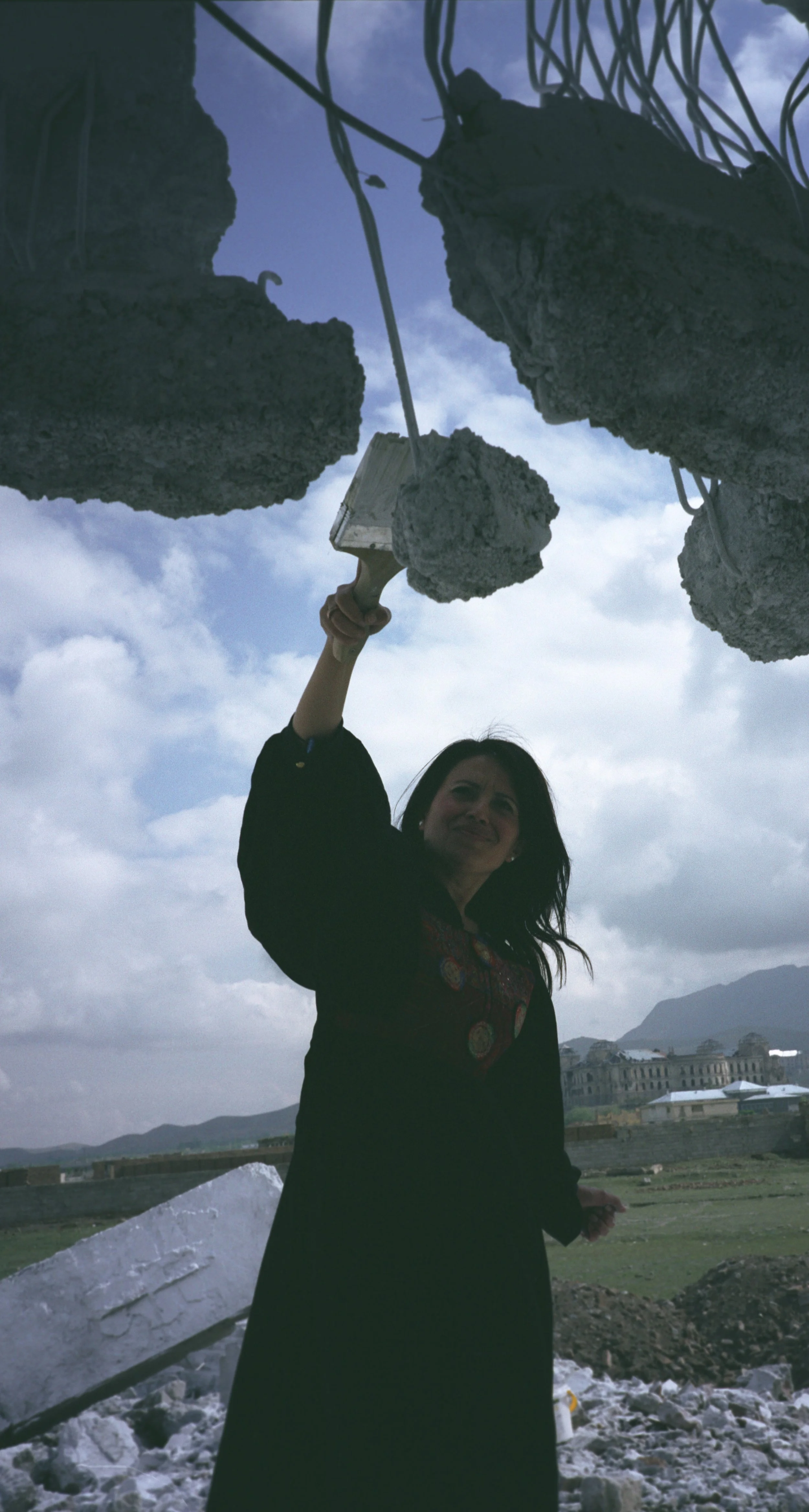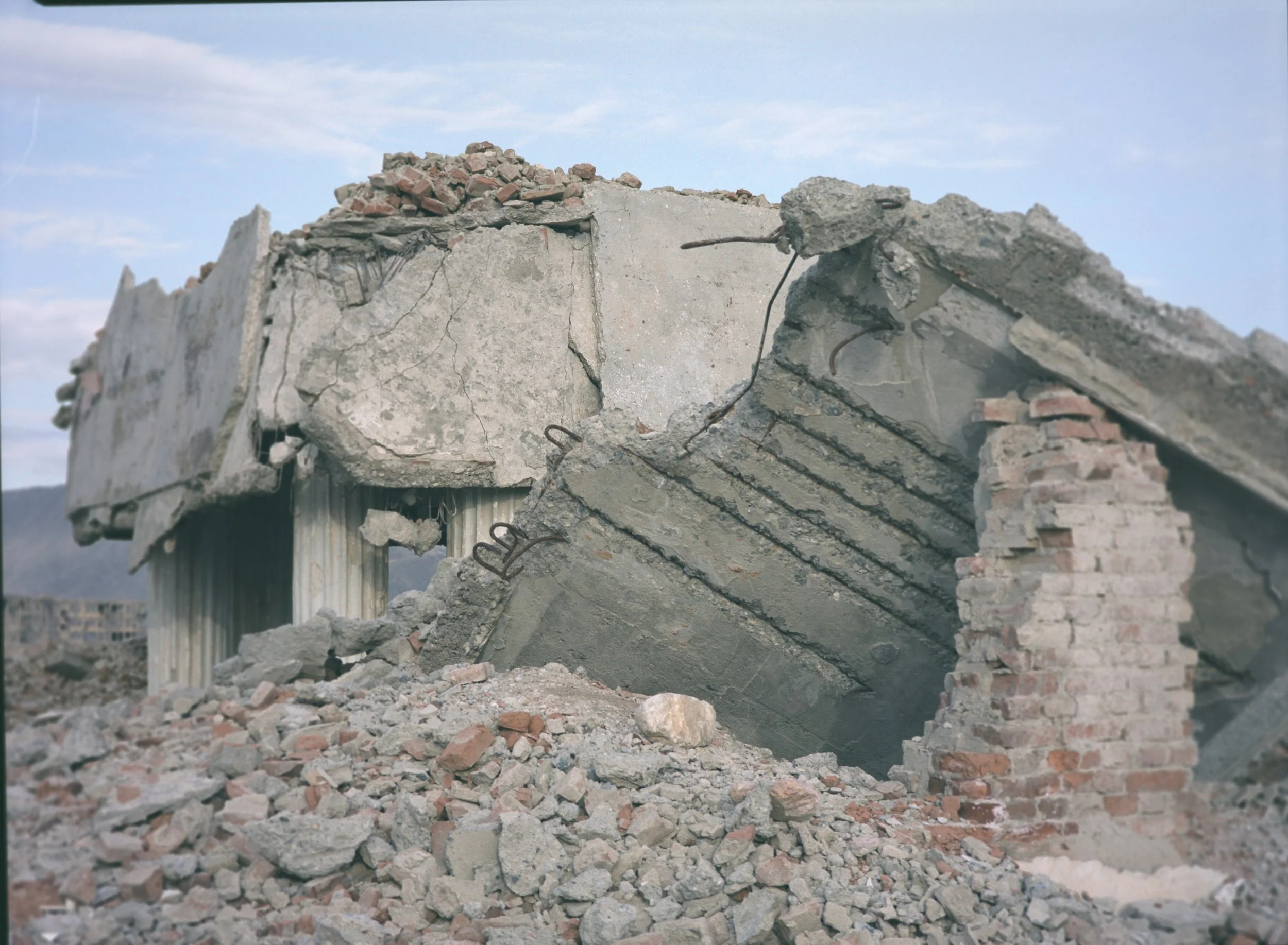
In 2005, with the support of The Banff Centre’s Banff International Curatorial Institute and the Walter Phillips Gallery, Afghanistan was officially represented for the first time at the Venice Biennale. Afghani artist Lida Abdul showed a series of videos in the Afghanistan Pavilion at the 51st Biennale – bringing work that poses questions about home and identity to one of the most prestigious contemporary art exhibitions in the world. “Engaging both with the long history of Western art and the less well-known histories of Indigenous cultures that one finds in Afghanistan, Lida’s work is suffused with the immediacy of ritual and beauty of meditative forms,” says Said Ismael Noori, who commissioned Abdul for the Afghanistan Pavilion.
The Banff Centre sponsored Abdul to edit and complete post-production on her Biennale work at the Centre. She had first come to Banff in 2004 as part of a creative residency called Intra-Nation, which brought artists from around the world to do work on the theme of independent cultures within politically and geographically defined nations. The Centre’s Walter Phillips Gallery presented Abdul’s Biennale exhibition in 2006, and was the publisher a catalogue to document the exhibition for both Banff and the official representation in Venice.
Through numerous film, video/performance and live performance works Abdul poses questions about place, community and identity. Lida Abdul travelled both literally and figuratively between Afghanistan and the West. Abdul was born in Kabul shortly before the Soviet invasion. As a refugee who fled Afghanistan as a child, Abdul traveled between several countries before finally settling in the United States. Lida Abdul received an MFA in Fine Art at the University of California at Irvine. Based in Los Angeles, she has also taught at ZKM in Germany. Figuratively, Abdul crosses borders and troubles perceptions of Muslim women, traversing in her work territories of identity, the body, space and architecture—all of which explore how to represent the unrepresentable.
Her work spans a variety of media, and bridges the gap between the traditions of Western art and thousands of years of Afghan cultural and intellectual experience.
The Banff Centre’s Banff International Curatorial Institute was able to support the production and publication of Abdul’s work as part of its ongoing visual art research project called Informal Architecture, funded by the Social Sciences and Humanities Research Council. Informal Architectures explores the interpretation of architecture from unconventional perspectives, with an emphasis on structures that are temporary, nomadic, or contingent. Funding secured through the Canadian Embassy in Afghanistan provided further support for this project. Abdul is represented by Giorgio Persano, Turin.
Lida Abdul
Lida Abdul, White House, 2005, 16mm film transferred to video.
Afghanistan pavilion at the 51st Venice Biennale, 2005.





